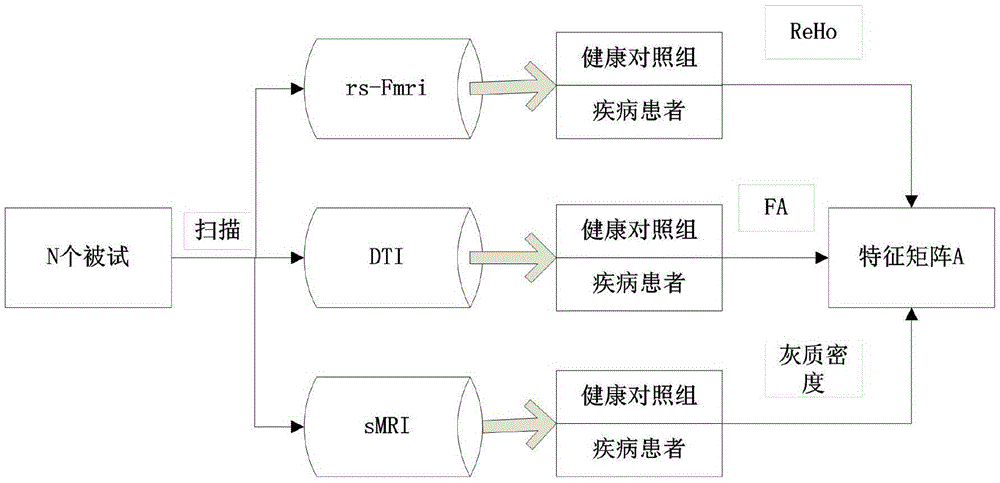Multimodal fusion image classification method based on rls-elm
A technology that integrates images and classification methods. It is used in character and pattern recognition, instruments, computer parts, etc. It can solve the problems of long training time and large storage space, and achieve the effect of improving classification accuracy and classification speed.
- Summary
- Abstract
- Description
- Claims
- Application Information
AI Technical Summary
Problems solved by technology
Method used
Image
Examples
Embodiment Construction
[0022] The present invention will be further described below in conjunction with the drawings and examples.
[0023] See figure 1 , figure 2 , image 3 , The RLS-ELM-based multimodal fusion image classification method contains the following steps:
[0024] Step 1: Obtain rs-fMRI, sMRI and DTI data of multiple subjects, and perform preprocessing to eliminate the data that does not meet the requirements.
[0025] Step 2: Calculate the ReHo (Regional Homogeneity) value of each voxel in the rs-fMRI data.
[0026] Step 3: Calculate the gray matter density (GrayMatterDensity) value of each voxel in the sMRI data.
[0027] Step 4: Calculate the FA (Fractional Anisotropy) value of each voxel in the DTI data.
[0028] Step 5: Connect the ReHo, gray matter density and FA value of each voxel to form a new feature matrix A.
[0029] Step 6: Perform PCA dimensionality reduction processing on the new feature matrix A.
[0030] Step 7: Train the RLS-ELM classifier to obtain the trained RLS-ELM classific...
PUM
 Login to View More
Login to View More Abstract
Description
Claims
Application Information
 Login to View More
Login to View More - R&D
- Intellectual Property
- Life Sciences
- Materials
- Tech Scout
- Unparalleled Data Quality
- Higher Quality Content
- 60% Fewer Hallucinations
Browse by: Latest US Patents, China's latest patents, Technical Efficacy Thesaurus, Application Domain, Technology Topic, Popular Technical Reports.
© 2025 PatSnap. All rights reserved.Legal|Privacy policy|Modern Slavery Act Transparency Statement|Sitemap|About US| Contact US: help@patsnap.com



